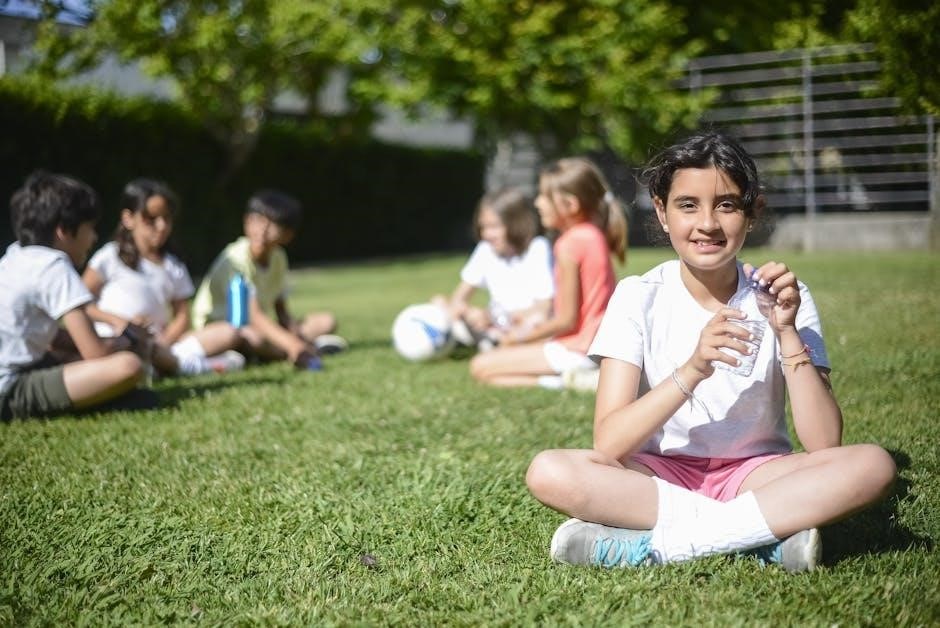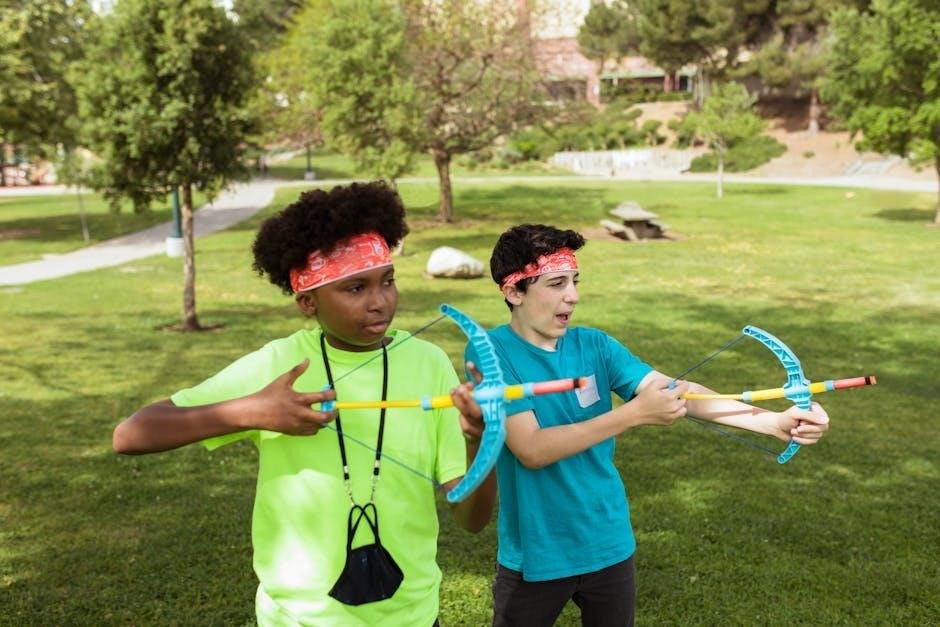first day of school activities middle school pdf
Nervous about day one? Conquer middle school with our fun, engaging activities! Download the PDF and make a killer first impression. No awkward silences here!
First Day of School Activities for Middle School: A Comprehensive Guide
The first day of school presents a unique opportunity to set a positive tone․ Discover activities, worksheets, and templates designed for middle school success․ Ensure a smooth transition and foster excitement․
The first day of middle school is crucial for setting the stage for a successful academic year․ It’s a time filled with anticipation, perhaps a little anxiety, and immense potential․ Thoughtfully planned activities are essential to transform any apprehension into excitement, fostering a sense of community within the classroom․ These initial experiences can define the learning environment for the months ahead․
This guide provides practical and engaging first-day activities specifically designed for middle school students․ These activities are crafted to help students get to know one another, familiarize themselves with classroom expectations, and ignite their enthusiasm for learning․ We’ll explore icebreakers, team-building exercises, and creative worksheets that will capture students’ attention and encourage active participation․
By implementing these strategies, teachers can establish a positive and inclusive classroom culture from the very beginning, paving the way for a productive and enjoyable school year․ Let’s make the first day memorable and meaningful!

The Importance of Icebreakers and Getting-to-Know-You Activities
Icebreakers are vital for building rapport and reducing anxiety․ These activities foster connections, encouraging communication and creating a welcoming atmosphere where students feel comfortable and ready to learn․
Name tag glyphs offer a uniquely creative and engaging way to kick off the school year, transforming a simple name tag activity into an interactive exploration of student personalities and interests․ This activity encourages self-expression as students use visual cues and symbols to represent aspects of themselves, making introductions more memorable and sparking conversations․
By assigning different colors, shapes, and design elements to various personal attributes like favorite subjects, hobbies, or even birth months, students create a visual representation of who they are․ This allows classmates to quickly learn interesting facts about one another, fostering a sense of community and belonging from day one․
The completed glyphs serve as colorful classroom decorations and conversation starters, creating a welcoming and inclusive environment․ This activity not only helps students get to know each other but also promotes creativity and critical thinking skills, setting a positive tone for the year․ It is a fun and accessible way to celebrate individuality and build connections within the classroom community․
3-2-1 Activity: Sharing Facts and Interests
The 3-2-1 activity is a simple yet effective icebreaker designed to encourage students to share personal facts and interests in a structured manner․ It involves students writing down three interesting facts about themselves, two hobbies or things they enjoy, and one goal they have for the school year․
This activity promotes self-reflection and provides a framework for students to introduce themselves to their classmates․ The structure ensures that students share a variety of information, from personal quirks to academic aspirations․ It is easily adaptable to different age groups and can be modified to focus on specific themes or topics․
After completing their lists, students can share their 3-2-1 with a partner, a small group, or the entire class․ This sharing process encourages active listening and helps students discover common interests with their peers․ The 3-2-1 activity is a valuable tool for building rapport, creating a sense of community, and setting a positive tone for the year․ It is a quick, engaging, and informative way to kick off the first day․

Engaging First Day Activities
Transform the first day with fun, interactive experiences․ Consider scavenger hunts and engaging games․ These activities will captivate students, promote interaction, and foster a positive learning environment from day one․
Scavenger Hunts and BINGO
Scavenger hunts and BINGO offer dynamic ways to introduce students to their new environment․ These activities encourage exploration and interaction, breaking the ice in a fun and engaging manner․ A scavenger hunt can familiarize students with key locations within the school, such as the library, cafeteria, or main office․ This hands-on approach helps them feel more comfortable and confident navigating their surroundings․
BINGO, on the other hand, can be tailored to incorporate facts about teachers, school policies, or interesting tidbits about the curriculum․ Creating BINGO cards with these elements transforms learning into a game․ Students actively listen and participate, marking off squares as they discover new information․
Both scavenger hunts and BINGO are easily adaptable to suit different class sizes and learning objectives․ They promote teamwork, communication, and problem-solving skills, making them valuable additions to any first-day activity plan․ The element of friendly competition adds excitement, setting a positive tone for the year․
“Two Truths and a Lie” Game
“Two Truths and a Lie” is a classic icebreaker that encourages students to share interesting facts about themselves while promoting critical thinking․ Each student presents three “facts” to the class: two true statements and one fabricated one․ The other students then try to guess which statement is the lie․
This game is excellent for fostering a sense of community and encouraging active listening․ It allows students to learn about their classmates in a fun, low-pressure environment․ The act of crafting believable truths and a convincing lie also challenges their creativity and communication skills․
To make the game even more engaging, consider setting a theme or providing prompts․ For example, students could share two truths and a lie about their summer vacation, their favorite hobbies, or their academic goals․ This adds structure and can spark more interesting and diverse responses․ It’s a perfect way to start conversations and build connections on the first day․

Printable Worksheets and Templates
Utilize printable worksheets and templates to facilitate engaging first-day activities․ These resources offer structured frameworks for reflection, goal setting, and creative expression, ensuring a productive and organized start․
First-Day-of-School Flip-Book
The “First-Day-of-School Flip-Book” is a creative activity where students craft a small booklet reflecting their hopes and goals․ This interactive template allows middle schoolers to express themselves through writing and drawing․ It’s a memorable keepsake, capturing their initial thoughts and aspirations for the academic year․
This activity sparks creativity and self-reflection․ Students personalize their flip-books with details about their interests, dreams, and what they hope to achieve․ The flip-book provides teachers valuable insights into their students’ personalities and learning objectives․ It’s a fun way to encourage self-expression and build a sense of community․
The flip-book becomes a tangible reminder of their enthusiasm․ Students can revisit their flip-books throughout the year, tracking their progress and reflecting on their initial goals․ It’s an engaging activity that promotes both individual reflection and classroom bonding․
First-Day-of-School Poem Template
The “First-Day-of-School Poem Template” invites students to compose a poem reflecting on their feelings and expectations for the new academic year․ This template provides a structured yet flexible framework, allowing students to express their thoughts creatively․ The template is designed to inspire students to think about their hopes, fears, and goals․
This activity encourages self-expression and imaginative writing․ Students can explore different poetic forms, such as haiku, acrostic poems, or free verse․ It is a valuable tool for teachers to gauge their students’ emotional state and writing abilities․ The template facilitates a reflective and engaging classroom environment․
The resulting poems become a unique snapshot of their initial perspectives․ Students can share their poems, fostering a sense of community and empathy․ It is a meaningful activity that celebrates the power of language and personal expression, creating a lasting memory of the first day․

Classroom Management and Expectations
Effective classroom management sets the stage for learning․ Establishing clear expectations and routines on day one is crucial․ This helps create a positive and productive learning environment․
Establishing Routines and Procedures
The first day of middle school is pivotal for setting expectations․ Clearly communicate routines like entering the classroom, handling materials, and participating in discussions․ Practice these procedures to reinforce understanding․ Consistency is key in establishing a structured environment․
Explain procedures for breaks, lunch, and transitions between activities․ Model appropriate behavior and provide opportunities for students to practice․ Use visual aids to support understanding and create a positive learning atmosphere․
Review procedures regularly, especially after breaks․ This helps maintain consistency and ensures students understand the expectations․ Create a safe and respectful environment where students feel comfortable participating․
Address any questions or concerns students may have about routines․ Encourage student involvement in developing classroom guidelines․ This promotes ownership and responsibility; Remember, a well-managed classroom enhances learning and engagement․
Goal Setting for the School Year
Empower students to define aspirations for the academic year․ Facilitate discussions on setting achievable academic and personal objectives․ Encourage reflection and planning for a successful school year․
Setting Academic and Personal Goals
The beginning of the school year provides the perfect opportunity for students to establish clear academic and personal goals․ Guide them in identifying areas they wish to improve upon, whether it’s mastering a specific subject, enhancing study habits, or developing new skills․ Encourage students to think about what they hope to achieve throughout the year and beyond․
For academic goals, prompt them to consider subjects they find challenging or areas where they want to excel․ Personal goals might include improving time management, building stronger relationships, or pursuing a new hobby․ Emphasize that goals should be specific, measurable, achievable, relevant, and time-bound (SMART)․
Provide templates or worksheets to help students articulate their goals and outline actionable steps to reach them․ Facilitate class discussions where students can share their goals and offer support and encouragement to one another․ Regularly revisit these goals throughout the year to track progress and make adjustments as needed․

